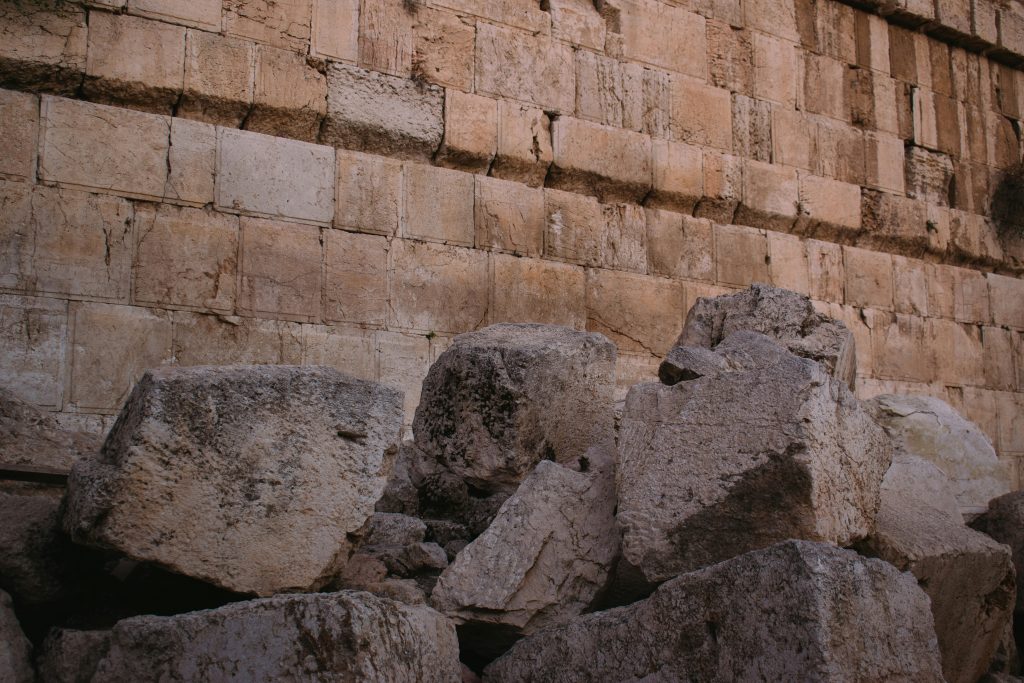


Daniel 7:13 is one of the most powerful eschatological statements in all of Scripture. And yet it is also one of the most misunderstood passages in popular Christian thought. A proper understanding of this verse — and it’s link to Daniel 7:14 — should go a long way in promoting a truly biblical eschatology. In this article I will provide a brief introduction to Daniel 7:13 — as it relates to Jesus’ eschatological teaching in Mark. I will focus especially on his prophetic statement in Mark 9:1.
Unfortunately, not only is Daniel 7:13 widely misunderstood by evangelical laymen, but Mark 9:1 is almost universally misunderstood by liberal biblical scholars. It is one of the passages used the most in attempting to undermine Jesus’ credibility (for instance, see Bertrand Russell’s, “Why I am Not a Christian”).
Mark opens his Gospel with Jesus’ first public message, wherein the Lord declares that the kingdom is coming soon: “Now after John had been taken into custody, Jesus came into Galilee, preaching the gospel of God, and saying, ‘The time is fulfilled, and the kingdom of God is at hand; repent and believe in the gospel’” (Mark 1:14–15).
Jesus opens his ministry declaring the kingdom is near and, through the course of the gospels, we come to discover that Jesus promised the kingdom would come in fullness and power within the first century. Mark 9:1 reads: “And Jesus was saying to them, “Truly I say to you, there are some of those who are standing here who will not taste death until they see the kingdom of God after it has come with power.” Unbelieving scholars points to this as a prophetic error made by Jesus, which undermines any thought of his deity. They claim this because they believe that Christ was speaking of his Second Coming here. He wasn’t. Daniel 7 makes this clear.
I kept looking in the night visions, And behold, with the clouds of heaven One like a Son of Man was coming, And He came up to the Ancient of Days And was presented before Him. And to Him was given dominion, Glory and a kingdom, That all the peoples, nations and men of every language Might serve Him. His dominion is an everlasting dominion Which will not pass away; And His kingdom is one Which will not be destroyed (Daniel 7:13–14).
Premillennialists especially like this passage in its misread form. This is because to them it seems to teach that when Jesus returns to earth, he will at that time establish his 365,000 day kingdom over “all the peoples, nations and men of every language” (Dan. 7:14).
But Daniel is presenting the messianic enthronement of the Son of Man in heaven — after he leaves the earth. Then because of his being gloriously enthroned, God will at that time grant him a kingdom in which he will exercise rule over all the nations from heaven. This is the fundamental point of the prophecy.
With this interpretation in mind, I have laid the basic foundation for understanding Jesus’ use of it. But now, let us strengthen that case by considering how Jesus references Daniel in the gospel of Mark.
Daniel 7:13 presents the messianic enthronement of the Son of Man in heaven — after he left the earth — when God granted Jesus a kingdom in which he would exercise rule over all the nations.
Daniel 7:13 is used by Christ on at least three occasions in Mark’s Gospel (Matthew likewise uses it on those occasions, as well as in the Great Commission in Matt. 28:18–20).
Mark 13:26 records Jesus as declaring: “Then they will see the Son of Man coming in clouds with great power and glory.”
Mark 14:62 records Jesus’ statement to the high priest at his trial: “[Y]ou shall see the Son of Man sitting at the right hand of power, and coming with the clouds of heaven.”
Mark 9:1 records Jesus’ promise to his disciples: “Truly I say to you, there are some of those who are standing here who will not taste death until they see the kingdom of God after it has come with power.”
Though in Mark 9:1 Jesus does not directly cite Daniel 7:13, a careful reading of the text demands we recognize that Daniel’s prophecy was present in Jesus’ mind as he spoke. In demonstrating Daniel’s influence on Mark 9:1, let us note the following links drawing them together literarily, as well as historically.
(1) Divine kingship. All three passages speak of the topic of divine kingship. However, this single link cannot establish our point all by itself. We must note a second link.
(2) Messianic identity. Not only is kingship central to all three Marcan passages, but so is Daniel’s “Son of Man,” the focal figure in his prophecy. The Son of Man is specifically mentioned in the very texts of both Mark 13:26 and 14:62. Although not mentioned in Mark 9:1, the “Son of Man” is the subject of Jesus’ teaching immediately preceding it, linking the two (Mark 8:38 – “For whoever is ashamed of Me and My words in this adulterous and sinful generation, the Son of Man will also be ashamed of him when He comes in the glory of His Father with the holy angels”). When Jesus tells his disciples that they will not all taste death until they see the kingdom of God come with power, he is referring to the kingdom given to the Son of Man at his ascension.
If it were not for Daniel’s declaration that the Son of Man was entering into heaven, the glory and “coming” language of his vision could easily apply to his Second Coming. But when we pay close attention to Christ’s use of Daniel 7:13, we discover that his eschatological predictions were concerning events that would occur within the first century, rather than in the distant future. Let us see how this is so in each of the three Daniel-influenced texts.
Mark 13:26 records Jesus as declaring: “Then they will see the Son of Man coming in clouds with great power and glory.” We have already seen that Daniel 7:13 lies behind this statement. Now we must note that very quickly after making this statement Jesus adds: “Even so, you too, when you see these things happening, recognize that He is near, right at the door. Truly I say to you, this generation will not pass away until all these things take place” (Mark 13:29–30). This ties the passage to the first century.
Not only so, but Mark 13 is prompted by Jesus’ warning: “Do you see these great buildings [of the temple, v. 1]? Not one stone will be left upon another which will not be torn down” (Mark 13:2). Jesus links his enthronement as the Son of Man in heaven with the coming destruction of the temple in Jerusalem. Note that Jesus indicates to his disciples that they would see these things occur; indeed, their generation would not pass away until all these things took place.
In Mark 14, Jesus has been put under oath by the high priest, which requires that he answer the primary question put to him. (Matthew’s version shows that he is being put under oath at this point, Matt. 26:63). Mark records his reluctance in answering the question: “He kept silent and did not answer. Again the high priest was questioning Him, and saying to Him, ‘Are You the Christ, the Son of the Blessed One?’ (Mark 14:61).
Then we read of Jesus’ answer to the high priest: “And Jesus said, ‘I am; and you shall see the Son of Man sitting at the right hand of power, and coming with the clouds of heaven’” (Mark 14:62). Consider the dramatic nature of this pronouncement, as they prepared to condemn Jesus to death—Christ speaks directly to the high priest and the Sanhedrin assembled at his trial and says: “you shall see” (John says much the same in Revelation 1:7, “Behold, he is coming with the clouds, and every eye will see him, even those who pierced him, and all tribes of the land will wail on account of him.”)
In his answer, Jesus is referring to his impending judgment and destruction of the temple, which is the dramatic, public demonstration that he has been enthroned by God and vested with universal power. The kingdom of God would be dramatically revealed with the destruction of the temple, which involves the collapse of the typological system of worship instituted under Moses and the completion of the old covenant (Heb. 8:13). Once again we see that the event is expected soon — in the life time of those assembled as his judges. This fits well with the Mark 13:26 statement that it will occur in “this generation.”
Jesus declares that the impending judgment and destruction of the temple in 70AD would be the dramatic demonstration that he had been enthroned by God and vested with universal power.
Mark 9:1 reads: “And Jesus was saying to them, ‘Truly I say to you, there are some of those who are standing here who will not taste death until they see the kingdom of God after it has come with power.’” Having already shown that Mark 9:1 also picks up on Daniel 7:13, we will note it follows the same near-time fulfillment of Daniel 7:13. As Jesus speaks to his disciples regarding their coming suffering (Mark 8:34–37), he promises them that they, like all who follow him throughout history, will be vindicated in the end. He gives them a confirmation of this promise, which they could take to heart: most of them would live to see his ascension on high and the following judgment upon Jerusalem.
Thus, we see in all three of the Marcan passages that have Daniel 7:13 behind them that they expect fulfillment in the first century: in “this generation” (Mark 13:26), within the life spans of the high priest and Sanhedrin (Mark 14:62), and while some of his disciples are still alive (Mark 9:1).
I have been assuming that the Marcan allusions to Daniel 7:13 point to the approaching destruction of the temple in AD 70. But now I must prove that observation.
Mark 9:1 does not directly state that Jesus is speaking of the destruction of the temple as he does, for example, in Mark 13:1–3. So we must find evidence for this interpretation of the their future historical experience that fits the expectation.
It is true that his transfiguration (Mark 9:2ff) is implied in this, for that is a dramatic exhibition to his disciples that he is the fulfillment of the law (Moses, Mark 9:4) and prophets (Elijah, Mark 9:4) and that he possesses the glory of God (Mark 9:3, 7). But this cannot be his referent, for he says that only “some” of them will not taste death until the event occurs. Thus, it must be farther off.
It is true that his resurrection is implied in this, for if he dies and remains in the grave, then his kingdom work has failed. But this cannot be his referent, for he says that only “some” of them will not taste death until the event occurs. Thus, it must farther off.
However, we learn from the Olivet Discourse that the AD 70 destruction of the temple fits the dramatic expectation. After all, the disciples are startled at his prophecy of the temple’s destruction and request more information from him on the matter (Mark 13:3–4). This leads to Jesus’ longest eschatological discourse at the conclusion of his teaching ministry (Mark 13:5ff).
And in his explanation of the destruction of the temple, he speaks quite dramatically of its implications: it will be like the sun and moon being darkened, the stars falling from heaven, and the powers of heaven being shaken (Mark 13:24). It will be an exhibition of Jesus’ “coming in the clouds with great power and glory,” as per Daniel 7:13 (Mark 13:26).
Furthermore, as historically expected in Mark 9:1 all of this glorious drama is “near” (Mark 13:28), “at the door” (Mark 13:29), and will happen in “this generation.” Thus, Mark 9:1 is pointing to the AD 70 destruction of the temple, which is a catastrophic event well-recorded in history and was the dramatic demonstration that Christ has been enthroned by the Father (Dan. 7:13).









No spam, stay up to date on new articles, resources and events!
Get notified about new articles from the Institute.